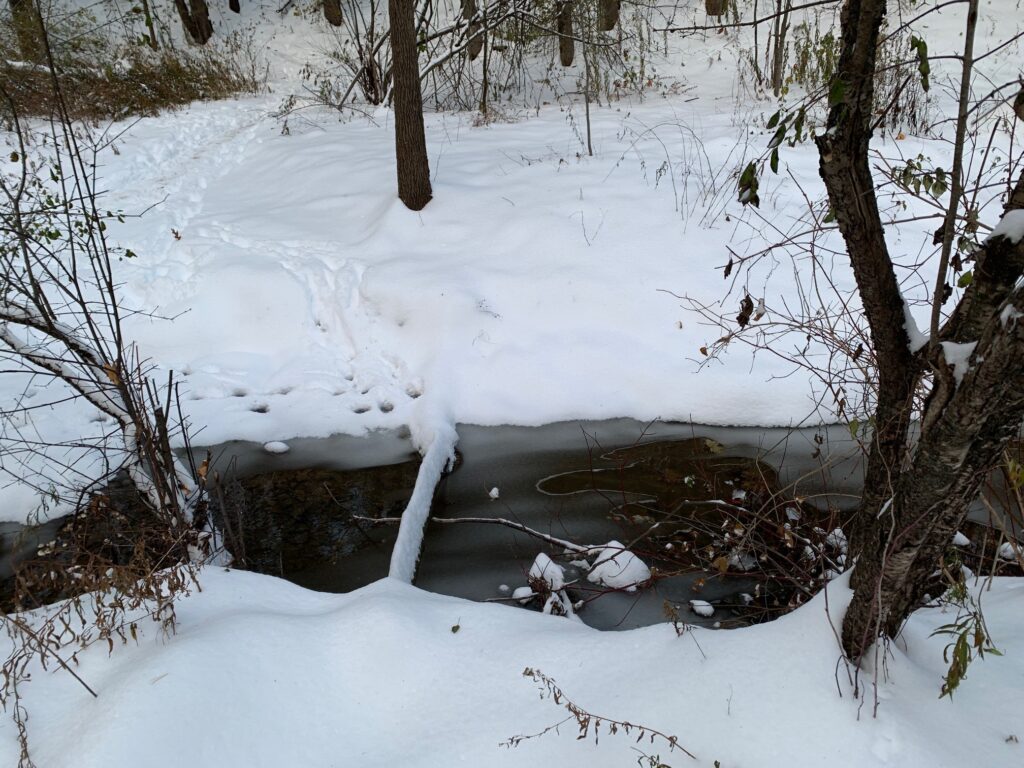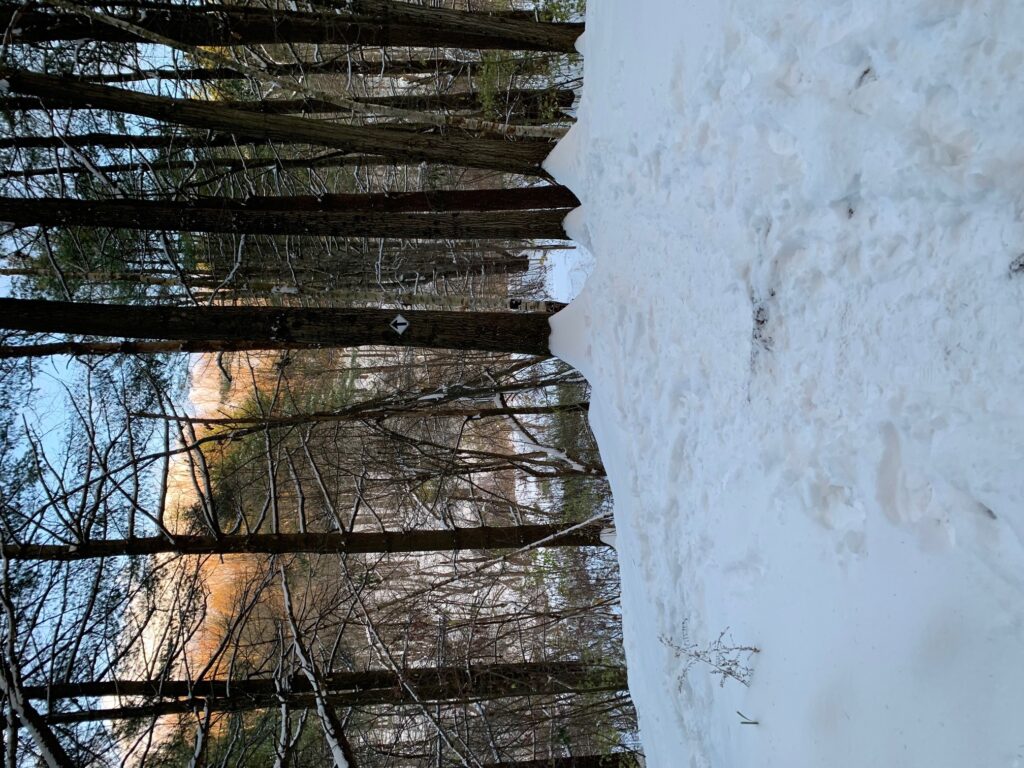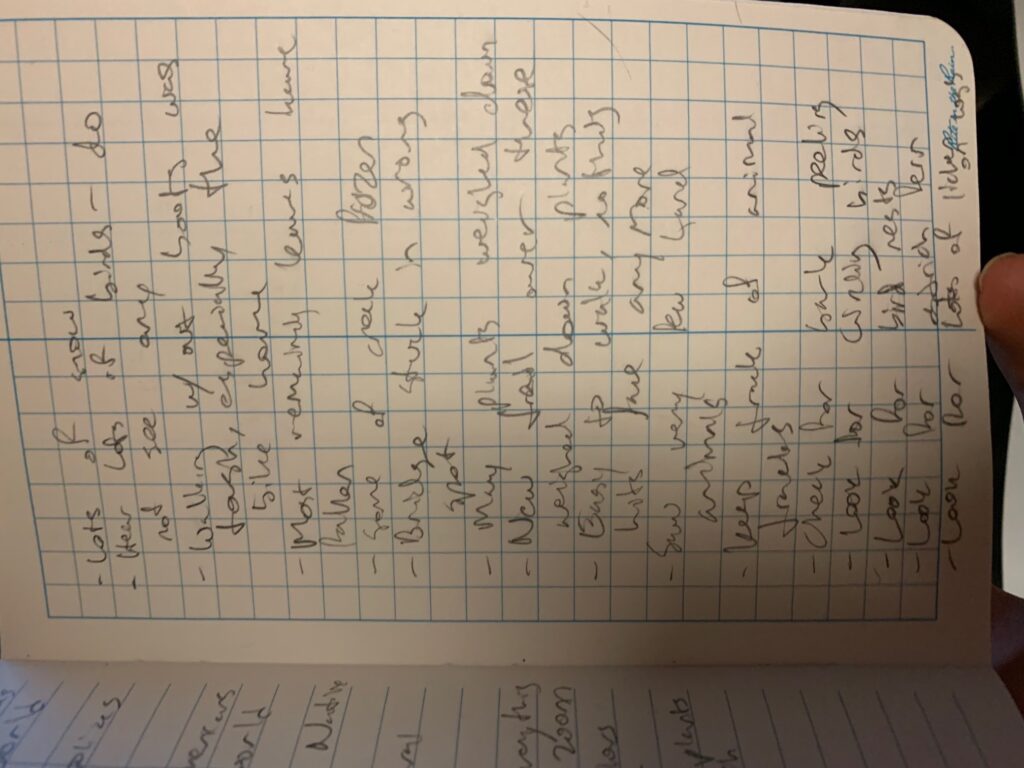









Place-Based Phenology for Redstone Quarry
Redstone Quarry










We have come into winter. There is snow all over the ground, although not so much in the trees. The trees have lost most of their leaves, so there is not place for the snow to sit. The trees are darker in look and have more scarred bark. The snow though is giving them some great warmth and fertilizer come spring. The sounds of animals now are limited to just birds. I saw no animals at all except one glimpse of a bird. The river is partially frozen, although it is flowing very smoothly, even under the ice. Most of the flowers and little plants are hidden. You feel guilty just walking around because the odds of stepping on something you do not see is so high. I slipped down the path a bit because of all the ice. I cannot imagine that this freeze is doing good things for the plants if I almost hurt myself in 20 min down there while they just have to sit and take it for 4 months.
Overall across Vermont snowfall is happening much earlier than normal. The temperatures are dropping fast, and ice is creeping up. Vermont all over has snow like this. Each and every tree has to deal with it. The lake is also going to get colder, forcing fish and animals like them into hiding as well. In Seattle when we started having these record falls the city would get shut down, and thousands of dollars be put in to getting rid of the snow and ice. The Centennial Woods have no city to protect them in this way.
This site is in the future. We are expected to have record breaking snowfalls and low temperatures this year. Likely due to climate change. But enough about that. Centennial Woods have lasted for likely thousands of years, or at least the part of them we know. It has dealt with winter so many times that it feels like a fight it cannot lose. If anything, the woods get more and more adapted to living in ice. Although climate change might come onto fast for them.








In my hike through my centennial woods site I found a huge variety of life. One of the easiest to notice was the sugar maple and red maple because of all the leaves they had spread over the ground. Another was the grass. It has gotten a lot taller since the last time I saw it and was all swept aside by the flooding. Another species I found was a slug. I did not manage to get a picture of it because it retreated into a log, but I am sure it was the Orange Banded Orion. Another species was the American Beech. This tree also had lost most of its leaves and looked bare. Another was the Eastern White Pine. This was one of the easiest to spot because it does not lose all of its leaves.
Firstly, I chose the maples because of the fall season. Most of the leaves on the ground came from them. They represent the change in seasons from Summer to Fall. The reason for the slug is that slugs come out in wet weather, and we have had quite a lot of wet weather quite recently. The reason for the pine was to show that not every tree is affected as greatly as the maples are by the season change. I identified the grass because of how much it was affected by the flooding. The final thing was the American beech just to show how many of them are in my area.
One of the changed that has occurred in the vegetation is that now you can see from one end of the forest to the other. There has been a huge amount of leaves falling. What used to be one of the most prominent tree types were deciduous trees but now the main one that’s easiest to see are the coniferous trees. An interesting thing about this is that now you can tell that the conifers only grow from halfway up their trunk to get the most value for their sun. The deciduous trees grow up to that point which I think is why they have that growing pattern.
One interesting thing about the soils right now is that they are very wet. The soils are all runny and muddy. It is unearthing the nutrients and spreading them across the whole forest. Also, they are slowly getting tons of leaves decomposing into them, which is why I suspect the slugs came out.
One thing that the map did was reinforce the barrier between the conifers and deciduous trees. It showed how they both had their line and did not really cross it. It also showed how the river heavily the entire ecosystem a ton. It gives nutrients to all of the surrounding plants, and the flood gives a huge spread of nutrients.